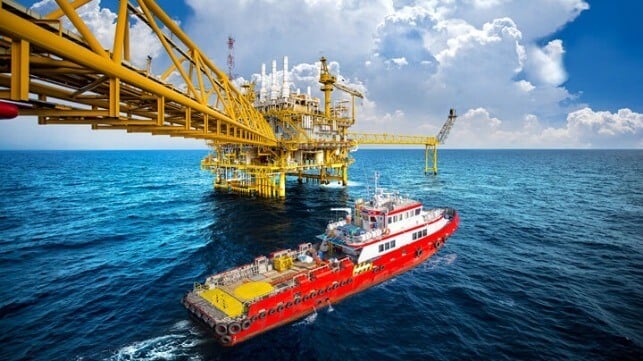Dynamic Positioning – Keeping Maritime Operations Safe

The technology of Dynamic Positioning has revolutionized many aspects of the maritime industry. The pioneering work of Howard Shatto saw his drillship ‘Eureka’ fitted in 1961 with the world’s first automated, algorithmic, positioning system and associated thrusters. In 1972, the U.S. CIA and Honeywell launched Glomar Explorer, of spy ship fame, which heralded the first production version of an automated positioning system for a vessel.
Fast-forward to the 1980s, and Dynamic Positioning, or DP, had achieved operational ubiquity in the fixed-position maritime sphere but with a dubious safety record. A UK Department of Energy report in 1987 noted 76 DP incidents in 10 years, of which more than 50 percent were attributed to human factors. A group of Aberdeen seafarers, from The Nautical Institute’s North of Scotland branch, duly undertook to address this issue and created the world’s first DP training and certification scheme.
Time jump again to 2024, and the safety data now indicates that DP has one of the best operator safety records in our sector. According to the IMO’s Marine Casualties and Incidents database, there has not been a marine casualty or very serious merchant shipping casualty attributed to dynamic positioning operations (including human error) since 2013 (the Maersk Detector). This is an exceptional turnaround from the early days of DP.
Causation and correlation in determining safety improvements are always a challenge. In the case of DP, the high quality of current DP Operator (DPO) and also DP Vessel Maintainer (DPVM) training is likely to be a contributing factor in safety improvements. The tough Nautical Institute examination requirements for DPOs to understand and to cope with 61 separate DP failure modes exemplifies the vast range of issues that a high-precision and high-safety DP operator can address.
Many undesired DP events and DP incidents are captured by the International Marine Contractors Association on behalf of the whole DP sector. In their running summary of DP station keeping events up to November 2024 , only one out of 138 events (0.7 percent) is attributed to a main cause of ‘Human’. (39 percent are attributed to ‘Thruster/Propulsion’, 27 percent to ‘power’, and 13 percent to ‘computer’, plus other factors). This is in stark contrast to the >50 percent human factors that led in 1985 to the current training regime.
Industry-led global DP training and certification, together with the underpinning quality assurance processes, should be seen as one of the great safety stories of the maritime sector. From the localized beginnings of a branch of The Nautical Institute certifying 90 students in the first year of the DP training scheme, to the current total of more than 27,000 DPOs certified by 84 accredited training centers worldwide, the best practices of bi-annually industry-reviewed and fully industry-administered DP training have made a major contribution to global maritime safety.
This article was created with support from The Nautical Institute. For additional information on the program visit them online.
The opinions expressed herein are the author's and not necessarily those of The Maritime Executive.
